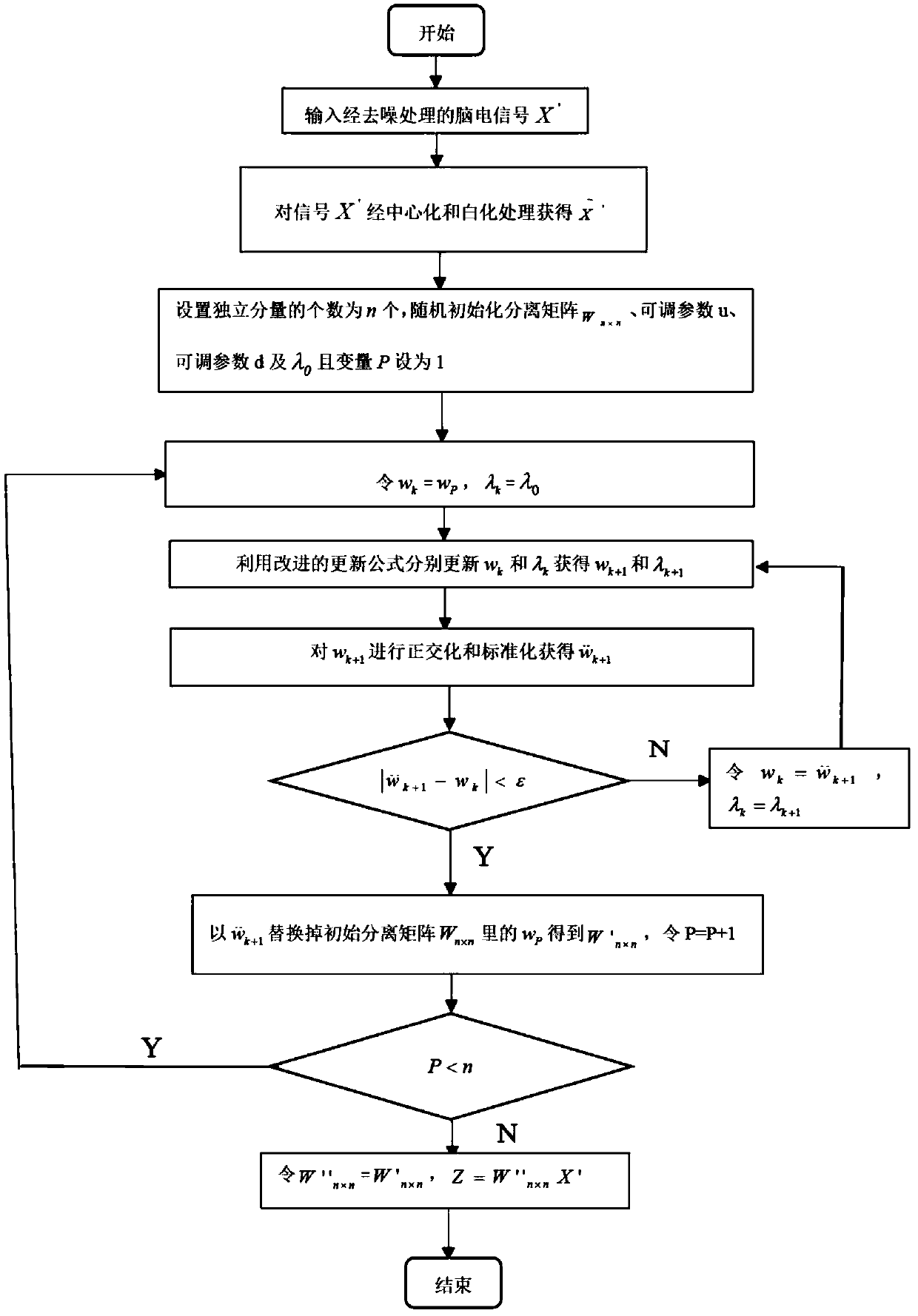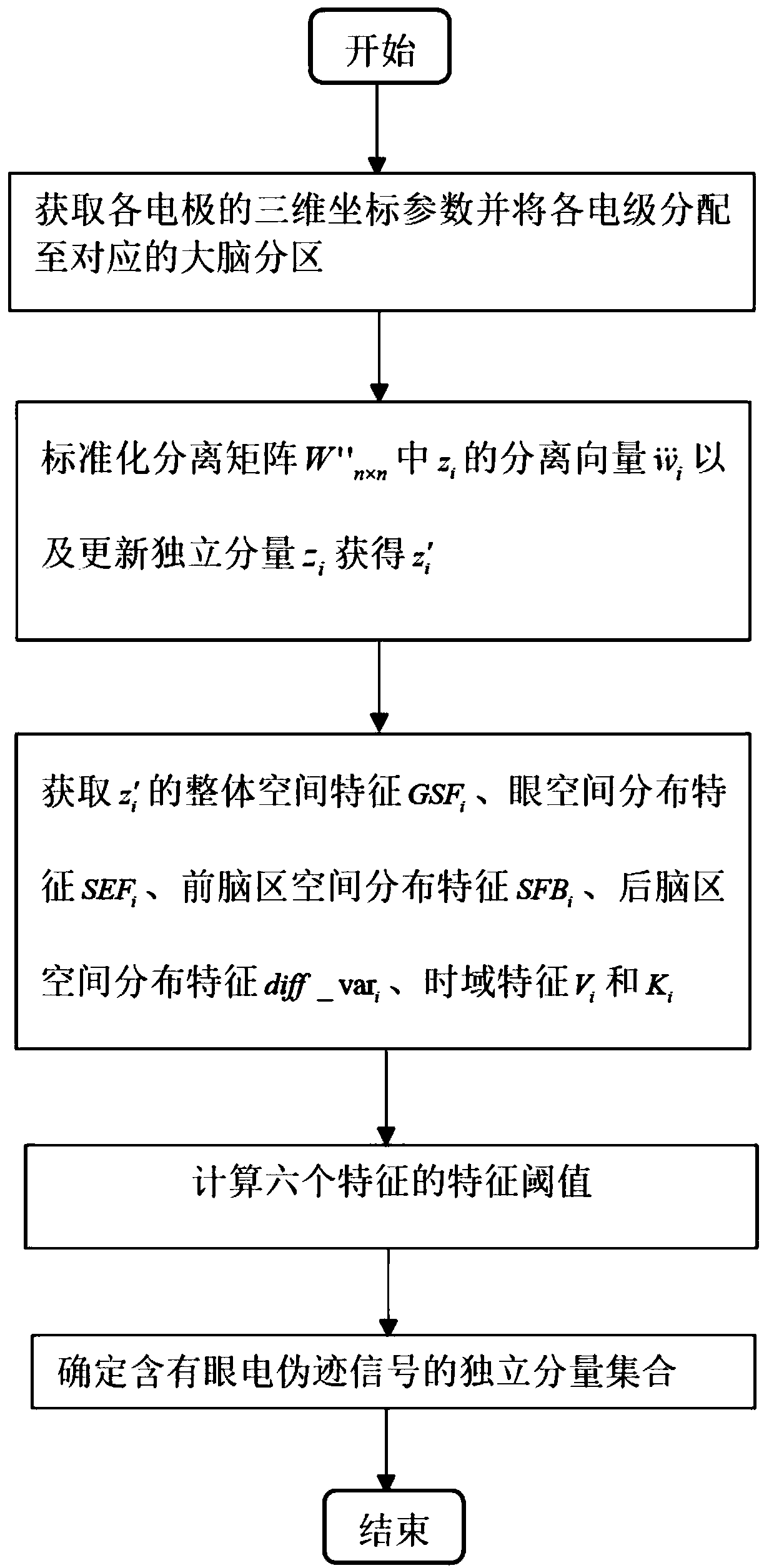Method for eliminating EEG signal noise artifact
A technology of EEG signals and artifacts, applied in medical science, sensors, diagnostic recording/measurement, etc., can solve problems such as inability to obtain independent components and increased algorithm complexity
- Summary
- Abstract
- Description
- Claims
- Application Information
AI Technical Summary
Problems solved by technology
Method used
Image
Examples
Embodiment 1
[0171] A method for removing noise artifacts of EEG signals. First, use NeurOne EEG acquisition equipment to collect four types of motor imagery EEG signal data X of two subjects. Each EEG signal sample is composed of 60 electrode leads. The signal is composed of signals, the signal sampling frequency is 250Hz, and each sample is collected for 4s, so the size of an EEG signal sample X is 60×1000. The collected EEG signals include each type of EEG signal with noise artifacts and EEG signals without noise artifacts. The real EEG signal with noise artifacts is as follows: Figure 4 As shown, the real EEG signal image without noise artifacts is shown as Figure 5 As shown, and then remove the EEG signal noise artifacts according to the previous steps, as follows:
[0172] (1) Carry out 4 layers of wavelet transform to EEG signal X, then the frequency range of each subband of the fourth layer is as shown in Table 1;
[0173] Table 1 Frequency range of each subband in the fourth l...
PUM
 Login to View More
Login to View More Abstract
Description
Claims
Application Information
 Login to View More
Login to View More - R&D
- Intellectual Property
- Life Sciences
- Materials
- Tech Scout
- Unparalleled Data Quality
- Higher Quality Content
- 60% Fewer Hallucinations
Browse by: Latest US Patents, China's latest patents, Technical Efficacy Thesaurus, Application Domain, Technology Topic, Popular Technical Reports.
© 2025 PatSnap. All rights reserved.Legal|Privacy policy|Modern Slavery Act Transparency Statement|Sitemap|About US| Contact US: help@patsnap.com



